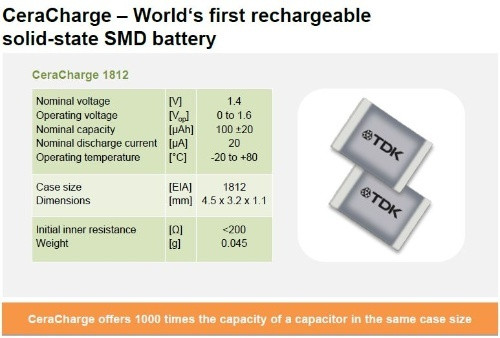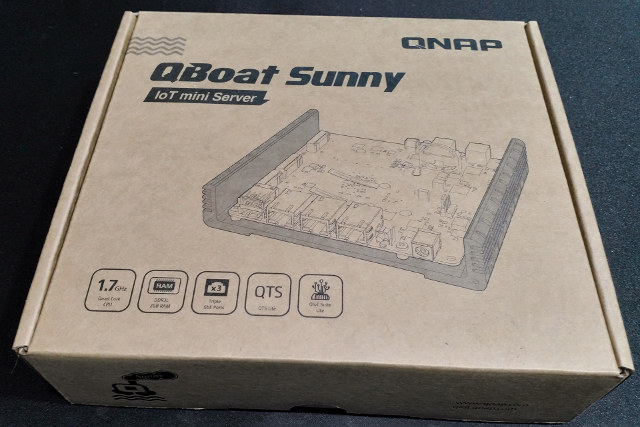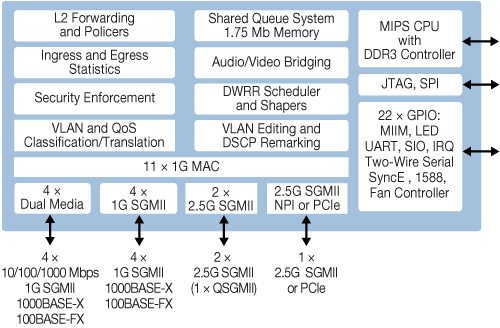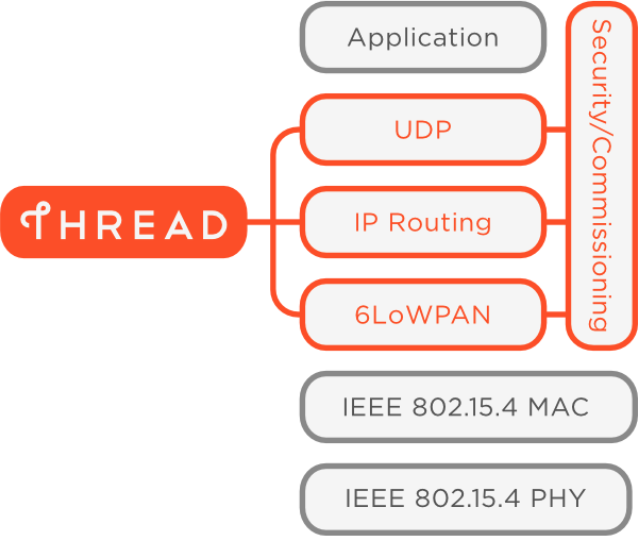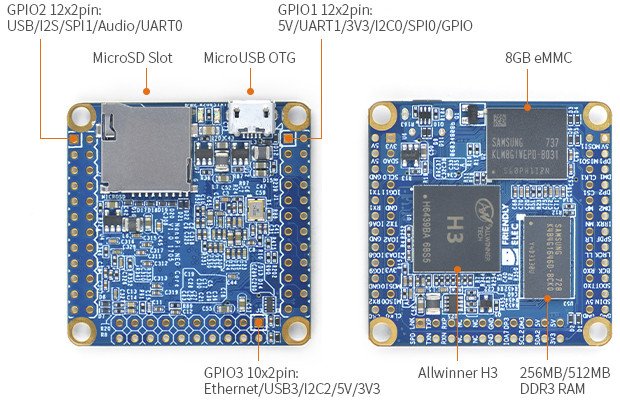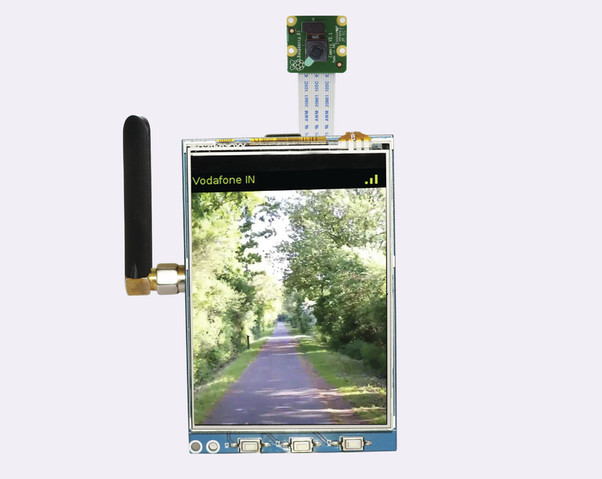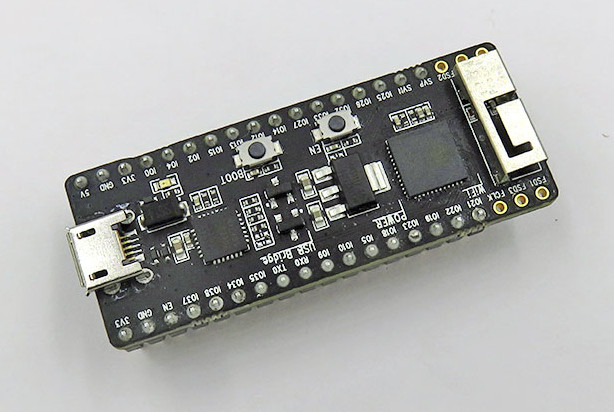We’ve recently seen solid state batteries are prone to dislodge current Lithium Ion battery technology as they are safer, support higher energy density, and faster charging. Such batteries are expected to be seen in car in the first part of the next decade, in smartphones starting possibly in 2019, but TDK has just announced their own CeraCharge rechargeable solid state SMD battery with mass production scheduled to start in April 2018. TDK CeraCharge battery-in-a-chip will come in compact EIA 1812 package (4.5 x 3.2 x 1.1 mm), offer a capacity of 100 µAh at a rated voltage of 1.4 V, and can be recharged up to 1000 times. Potential applications include IoT devices, real-time clocks, Bluetooth beacons, and systems for energy harvesting. The battery – which will look very similar to an SMD capacitor – does not include liquid electrolyte, and instead uses a solid ceramic element as electrolyte which rules out any risk of fire, explosion, […]
QNAP QBoat Sunny Review – Part 1: Unboxing, Closer Look, and Initial Setup
We spotted the QBoat Sunny at QNAP’s booth back at CES in January and much has changed since then. Not only did QNAP change from an Intel based solution to an ARM based one, but the product seems to have shifted from being a development board to a strange kind of IoT server. The QBoat Sunny sample that QNAP provided for us to look at is based on the Annapurna Labs AL-314 quad core ARM Cortex-A15 SoC which is clocked at 1.7GHz. This has been paired with 2GB of DDR3L RAM (non-expandable) and 512MB of NAND flash that isn’t user accessible, much as on their NAS products. This simply contains the core parts of the QTS Lite OS. As such, you need to install an M.2 SATA SSD to be able to get started with the QBoat Sunny. QNAP provides a list of compatible SSDs on its website, although some […]
Microsemi VSC7513 and VSC7514 MIPS SoCs for Ethernet Switches Get Initial Mainline Linux Support
Microsemi VSC7514 is a 10-port Gigabit Ethernet (GbE)/SMB switch supporting a combination of 1G and 2.5G Ethernet ports, and VSC7513 comes with basically the same features except it’s limited 8 ports. Both SoCs include a MIPS processor with DDR3 memory interface, and support industrial and enterprise Ethernet switching features such as VLAN and QoS processing. Microsemi VSC751x Ocelot family was unveiled in June 2016, but I only heard about them today, as Free Electrons recently added initial support for VSC7513 & VSC7514 chip into mainline Linux with the patch series available here. Microsemi VSC7514 specifications & features: CPU / Memory Interface – Integrated 500 MHz MIPS 24KEc CPU with MMU and DDR3/DDR3L SDRAM controller Ethernet Connectivity – 4x dual media copper ports, 2x 1G SGMII ports, and 2x 1G/2.5G SGMII ports Host CPU Interfaces – PCIe 1.x and NPI CPU interface Internal shared memory buffer (8 queues per port) Jumbo […]
Google Announces LoWPAN/Thread Support in Android Things DP 6.1
Not to be confused with LPWAN (Low Power Wide Area Network), LoWPAN (Low Power Wireless Personal Area Network) solutions are designed for peer-to-peer usage on constrained battery-powered devices using standard procotols like HTTP and CoAP. Based on 6LoWPAN and 802.15.4, Thread is one of those LoWPAN standards, and Google has just added API support for configuring and managing LoWPAN as a part of Android Things Developer Preview 6.1, including networking support for Thread. Google explains “these types of low-power connectivity solutions enable Android Things devices to perform edge computing tasks, aggregating data locally from nearby devices to make critical decisions without a constant connection to cloud services”. You can read LoWPAN API guide to learn more details on building your own apps to create and join local mesh networks, but to quickly get started OpenThread running on Nordic Semi RF52840-PDK is recommended. You’ll first need to install the firmware and […]
NanoPi NEO Core and NEO Core2 Allwinner H3/H5 Systems-on-Module Launched for $7.99 and Up
FriendlyELEC has launched many cool NanoPi development boards such as NanoPi NEO2, NanoPi A64, or more recently NanoPi Duo based on Allwinner H- or A- series ARM processors, as well as some models based on Samsung/Nexcell or Amlogic SoC. The company has now launched two other NanoPi products that are a bit different since they are systems-on-module – or could even be considered minimal development boards – with namely NanoPi NEO Core powered by Allwinner H3 quad core 32-bit processor, and NanoPi NEO Core2 based on Allwinner H5 quad core 64-but processor. NanoPi NEO Core Specifications: SoC – Allwinner H3 quad core ARM Cortex-A7 processor up to 1.2GHz with Mali-400MP GPU System Memory – 256MB or 512MB DDR3 RAM Storage – NC/8GB/16GB/32GB eMMC flash, micro SD slot USB – 1x micro USB OTG port also used for power input Expansion – 2x 2.54mm pitch 24-pin headers, 1x 2.54mm pitch 20-pin […]
Turn Your Raspberry Pi into a “Smartphone” or Cellular IoT Gateway with PiTalk 3G HAT (Crowdfunding)
The Raspberry Pi boards are used in a countless number of projects, and some of those turn one of Raspberry Pi boards into a (thick) smartphone powered by Linux. The first one was probably PiPhone based on Raspberry Pi 1 Model B, and other followed suit such as TyTelli based on Raspberry Pi Model A+, and more recently ZeroPhone powered, as its name implies, by Raspberry Pi Zero board. UK based SB Components Ltd is offering another option with their PiTalk HAT based on a Quectel 3G UMTS module, and kits adding a 3.2″ to 5″ display, an optional camera, and/or Raspberry Pi 3 board. PiTalk board specifications: Cellular Connectivity Quectel UC15 3G/2G UMTS/HSDPA and GSM/GPRS/EDGE module with up to 3.6 Mbps download, 384 Kbps upload SMA antenna connector Push push SIM card holder Voice, SMS and data support Audio – 3.5 mm audio jack, speaker and mic support via […]
RAK Wireless Introduces LoRa + BLE Module, LoRa GPS Tracker, and NB-IoT/eMTC Arduino Shield
We’ve previously covered several products from RAK Wireless, including RAK WisCam Arduino compatible Linux camera, RAK CREATOR Pro Ameba RTL8711AM WiFi IoT board, and WisCore modular development kit for application leveraging voice assistants such as Amazon Alexa. AFAIK, the company had not released any new products since their RAK831 LoRa gateway module launched last summer, but they just contact me with the release of three new wireless products, namely RAK813 BLE + LoRa module, RAK811 LoRa tracker board, and WisLTE NB-IoT/eMTC/eGPRS Arduino shield. RAK813 BLE + LoRa module & Development Board Main features and specifications: Connectivity LoraWAN via Semtech SX127x (LoRa) chipset Frequency Ranges 433MHz, 470MHz FCC Frequency range 902~928MHz CE Frequency range 863~870MHz MIC Frequency range 920~928MHz KCC Frequency range 920~923MHz Receiver Sensitivity: LoRa down to -146 dBm TX Power – adjustable up to +14 dBm, max PA boost up to 20dbm Range – Up to 15 km in rural […]
ESP32-PICO-KIT v4 Board Based on ESP32-PICO-D4 SiP Now Available for $10
A little while ago, I received a bunch of ESP32 PICO Core development boards which were based on Espressif Systems ESP32-PICO-D4 system-in-package with ESP32, 4MB SPI Flash, and other components. The advantage of such chip is that is requires less external component, and allows for smaller designs. For example, the boards I received would leave two row of pin on each side of the board, while most other ESP32 boards will only expose one row on each side. I used the board to play with Micropython ESP32 port, and later-on when I launched a giveaway of 8 of the boards, I found out the name had changed to ESP32-PICO Kit, with the documentation listing v3 with all pins connected to male headers, and v4 with 6-pin not connected to a male header as shown in the photo below. Both versions of the board also have a different pin layout. But […]


